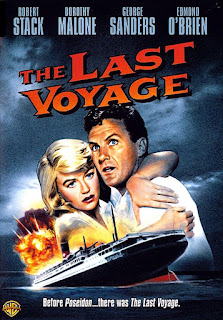Directed by Lew Lehmen from a script penned by Ian Stuart, The Pit is a very strange motion picture.
The story centers on 12-year-old Jamie (Sammy Snyders), a loner who is bullied by classmates and considered an oddball by the local adults (even his parents - played by Richard Alden and Laura Press - have a hard time understanding his behavior). Before heading out of town on a trip, Jamie’s mom and dad hire Sandy O’Reilly (Jeannie Elias), a live-in babysitter, to look after their young handful. Even though she’s twice his age, Jamie soon believes he’s falling in love with Sandy. In fact, he has a crush on several older women, including the librarian (Laura Hoillingsworth), and for a boy of twelve he spends an inordinate amount of time thinking about sex (during dinner one night, Jamie drops his napkin so that he can peer up Sandy’s skirt).
But Jamie’s bizarre behavior isn’t limited to an overactive libido. His only friend is his teddy bear, which he talks to on a regular basis. What’s more, Jamie has discovered something unusual in the nearby forest: a large pit that he believes is home to a group of carnivorous troglodytes! Naturally, when he tries to tell Sandy about his “friends” in the woods, she doesn’t believe him, but if these creatures are truly a figment of his imagination, why are people who have mistreated Jamie in the past suddenly disappearing?
Sammy Snyders delivers a strong performance as Jamie, who is both a sympathetic character (we feel bad when he’s teased by the librarian’s niece Abergail, portrayed by Andrea Swartz) and a little monster (he plays a nasty trick on the librarian in order to take pictures of her naked). As the central character, Jamie is the primary focus of The Pit, and his shenanigans are the source of the movie’s more horrific sequences; the scenes in which he talks to his teddy bear are pretty damn creepy (especially when the Teddy responds in Jamie’s voice), yet it’s what Jamie does to “care” for his troglodyte buddies that are the film’s most disturbing moments.
Tonally, The Pit is all over the place. It has the look of a made-for-TV movie, but is unflinching in its depiction of Jamie’s sexual obsession (one morning, he sneaks into Sandy’s room to watch her sleep, and stares at her partially exposed breast). And while The Pit is undoubtedly a horror film, director Lehmen occasionally slips a few comedic scenes into the mix, many of which feel out of place (especially one in particular, involving an elderly blind woman in a wheelchair). Yet despite all this, I would not hesitate to recommend this 1981 Canadian flick to genre fans.
Sure, The Pit is weird, and times it’s a bit of a mess. But it’s never boring, and I can pretty much guarantee you’ve never seen anything quite like it before!
RATING: 7 out of 10 (worth a watch)













